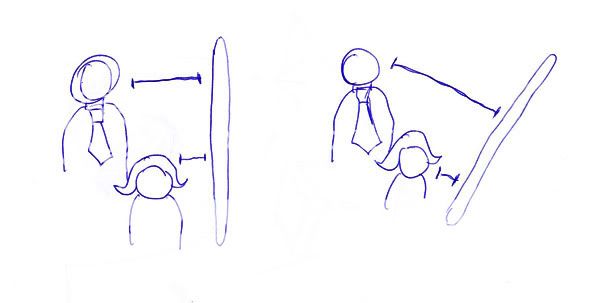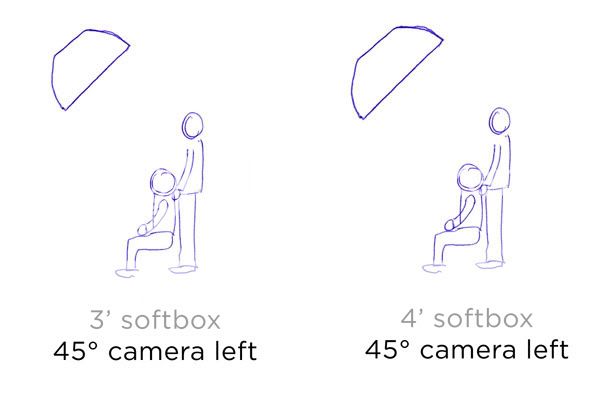kkamin
TPF Noob!
- Joined
- Aug 25, 2009
- Messages
- 515
- Reaction score
- 17
- Location
- Minneapolis
- Can others edit my Photos
- Photos OK to edit
I was shooting my friend's family for fun at Thanksgiving. Here is what I did:
•We didn't have a lot of space, but I set up a grey paper sweep (looks close to an 18% grey card in tone).
•I had a 3' octagon softbox lighting the subjects in a Rembrandt position and angle. It was fitted with a grid to minimize spill. For the shot that I sharing, I had one subject sitting and one subject standing. I had the softbox a couple feet from the standing subject. Because of the inverse square law, if the softbox was brought in closer I think the lighting would be less even on their faces -because of their distance. So I think the placement of the light where it was, was practical.
•I had a light fitted with a 7" reflector and 20 degree honeycomb grid creating a spot on the wall.
•I wish the position of the subjects could have been farther from the back of the wall, but I had a space issue, and I still needed to have somewhere to stand to take the shots.
The problem is that I wanted more fill on the subjects while keeping the background's rich dark tone. I think for this shot I used a reflector, but I think the shadows are still too harsh for the mood I wanted for the portrait. I tried filling them with a strobe shooting into an umbrella and tried to angle it to the side fairly far in order to reduce the spill on the back of the sweep, but it still kicked up the background a stop or two.
I tried shooting into a piece of flat foamcore, thinking it might be a touch more directional that a concaved umbrella surface. But the results were similar.
1. Is there a solution to getting more light into their shadows without effecting the tone of the background too much?
2. Say if I don't mind a low key look and if I use a reflector and try to fill in both subjects evenly, it is difficult, since I'll angle is upwards a bit rather than parallel to them, and the nature of the angle creates a longer distance from the man to the reflector than the woman to the reflector. He would receive less fill.
3. I've been shooting for a while but this problem has started to make me second guess my fundamental fill techniques. I feel like I'm not getting complete shadow control. Are you normally placing your fill angled slightly up towards the subjects to fill in under their necks (shooting up at the subjects). Often my umbrellas are straight on to the subject about 45 degrees from the camera.
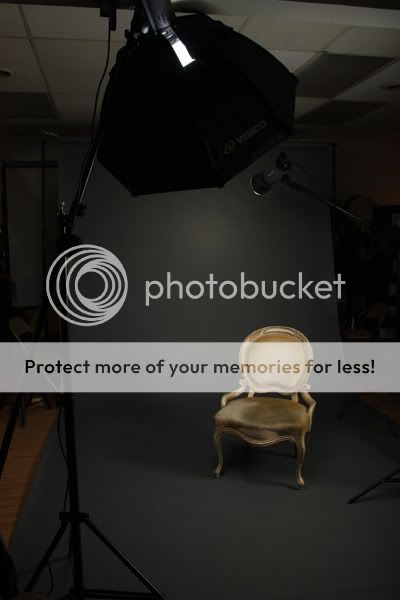
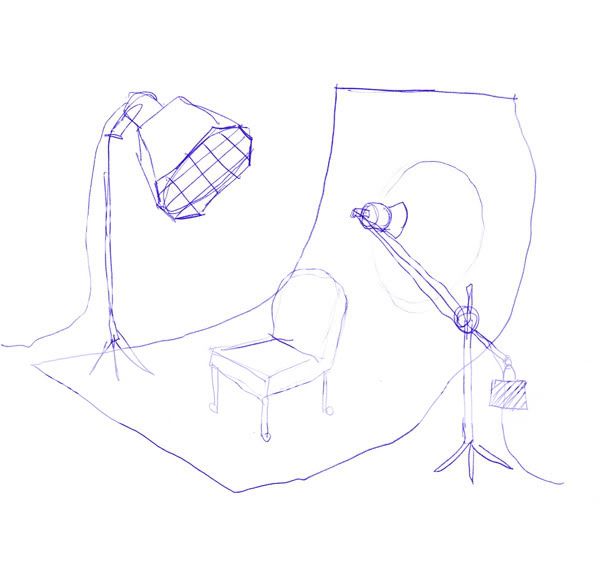
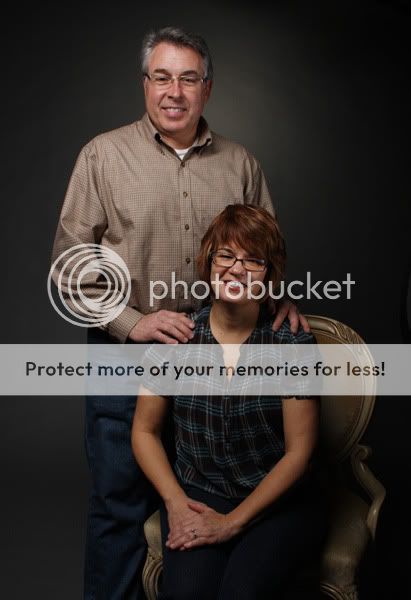
Thanks for reading.
-Kkamin
•We didn't have a lot of space, but I set up a grey paper sweep (looks close to an 18% grey card in tone).
•I had a 3' octagon softbox lighting the subjects in a Rembrandt position and angle. It was fitted with a grid to minimize spill. For the shot that I sharing, I had one subject sitting and one subject standing. I had the softbox a couple feet from the standing subject. Because of the inverse square law, if the softbox was brought in closer I think the lighting would be less even on their faces -because of their distance. So I think the placement of the light where it was, was practical.
•I had a light fitted with a 7" reflector and 20 degree honeycomb grid creating a spot on the wall.
•I wish the position of the subjects could have been farther from the back of the wall, but I had a space issue, and I still needed to have somewhere to stand to take the shots.
The problem is that I wanted more fill on the subjects while keeping the background's rich dark tone. I think for this shot I used a reflector, but I think the shadows are still too harsh for the mood I wanted for the portrait. I tried filling them with a strobe shooting into an umbrella and tried to angle it to the side fairly far in order to reduce the spill on the back of the sweep, but it still kicked up the background a stop or two.
I tried shooting into a piece of flat foamcore, thinking it might be a touch more directional that a concaved umbrella surface. But the results were similar.
1. Is there a solution to getting more light into their shadows without effecting the tone of the background too much?
2. Say if I don't mind a low key look and if I use a reflector and try to fill in both subjects evenly, it is difficult, since I'll angle is upwards a bit rather than parallel to them, and the nature of the angle creates a longer distance from the man to the reflector than the woman to the reflector. He would receive less fill.
3. I've been shooting for a while but this problem has started to make me second guess my fundamental fill techniques. I feel like I'm not getting complete shadow control. Are you normally placing your fill angled slightly up towards the subjects to fill in under their necks (shooting up at the subjects). Often my umbrellas are straight on to the subject about 45 degrees from the camera.



Thanks for reading.
-Kkamin
Last edited:


